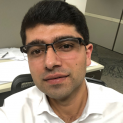Leaderboard
Popular Content
Showing content with the highest reputation on 01/04/15 in all areas
-

Will Appreciate Any Idea's/suggestions.(Help)
UmarMakhzumi and one other reacted to EngrUzair for a topic
Assalam-o-alaikum! All of the courses and other relevant material (formulas, tables etc) you have mentioned in your post, are necessary for your professional development. Which of them you will actually use in your professional life, will depend upon nature of practical problems you will come across and have to find solutions thereof. In general, you will need and use them, MUCH MORE in STRUCTURAL ENGINEERING, than in any other field of civil engineering. As regards planning to do masters from and working abroad, IMHO you may obtain sufficient information from the internet, about the scope of civil engineers not only in Australia, but in other advanced countries (like USA and Germany etc.) as well. And, it will probably help you select a better option if you check your prospects in more than one country, and make your final decision keeping in view advantages and disadvantages in each case. Regards.2 points -
Assalam-o-alaikum! Very well said, Sir Umar! I totally agree with that. I personally missed the opportunity of working abroad after completion of masters from USA, being on scholarship and bound to come back to Pakistan after completion of education. Regards.1 point
-

Will Appreciate Any Idea's/suggestions.(Help)
RASHEED reacted to UmarMakhzumi for a topic
https://www.daad.de/de/is your gateway to Germany. http://www.pk.emb-japan.go.jp/Education.htmlis your gateway to Japan. And there are a lot more scholarships that can get you a foreign degree(like US Fulbright) but you will have to return home after your degree is completed. AIT offers a similar scholarship too. I would share with you what I thought and did when I was out of university. After working for two years in Islamabad as a Structural Engineer, one thing that I was certain was that the usefulness of a foreign degree could not be maximized unless I have worked abroad as an engineer. I was also confused about to do a research thesis or just a degree program. Well, on one of the projects I did for USAID, I happened to meet Kazami Sahab(SMK Associates) and after discussing with him I went for a degree program and no-scholarship. Today, I am glad that my understanding of working abroad was correct and I am also grateful to Kazmi Sahab for convincing me not to do a thesis program as that saved me 1.5 years of salary. I can tell you the you won't get the max out of your degree unless you have worked in a different and more robust environment than Pakistan. However, having said that if you go for a thesis or PHD, the challenges involved in the degree would open up your mind and help you take on things with a different approach. Set your goals and go achieve them. Good Luck.1 point -

Property Modifiers For Retaining Walls
WR1 reacted to UmarMakhzumi for a topic
I think thats what the post says . The reason however makes more sense for single story basements only. All I am asking is to exclude sesimic weight of basement story. This also assumes that walls are all around perimeter and diaphragm is rigid. Thanks.1 point -
Property Modifiers For Retaining Walls
UmarMakhzumi reacted to WR1 for a topic
Interesting discussion. I am in to have your more detailed views on this. So Umar you mean we dont need to apply EQ on 2 basements because of stiff diaphragm and walls? Asad, yes 0.7 on all is perfect.1 point -

Trade Secrets: B.f. Goodrich Vs Wohlgemoth Case
Badar (BAZ) reacted to UmarMakhzumi for a topic
The following excerpts are from B F Goodrich v Wohlgemoth case in which a young engineer named Donald Wohlgemuth who walked over from B. F. Goodrich to a competitor, International Latex, and then discovered, to his shock, that Goodrich objected. Brooks(Author of the book from which this text is copied) traces the story of how Goodrich dragged the young man into court to stop him sharing secrets of the space suit they were designing for Mercury astronauts. You will like it if you are related to Law or Engineering. Here is the case: Donald Wolhgemoth worked his entire career in the ‘pressure space suit department’ at B F Goodrich and had risen through the ranks to be manager of this highly specialized department in charge of all research and development regarding space suits. In 1964, Wohlgemuth announced his resignation to go to work for International Latex Corporation in their space suit department, which was 14 years behind B F Goodrich in the development of this specialised technology. B F Goodrich sued Wohlgemuth to protect its trade secrets. There was no evidence of actual misappropriation of any trade secrets although Wohlgemuth was reported to have said to fellow employees that ‘loyalty and ethics had their price; insofar as he was concerned, International Latex was paying that price.’Based on this record, the court had no reservation granting injunctive relief to prevent the threatened misappropriation of trade secrets. The court decreed ‘We have no doubt that an injunction may issue in a court of equity to prevent a future wrong although no right has yet been violated.’ Further, the court stated, ‘unless a restraining order is entered, Goodrich may suffer irreparable injury.’ The scenario now is that an employer seeking injunctive protection for his trade secrets prior to their disclosure has to allege that either the ex-employee actually intends to do so or that the type of work is such that he is subconsciously doing so. The situationis such that the threat of misappropriation of trade secrets can be enjoined without regard to proof of actual misappropriation or the intent of the former employee. This is called the doctrine of 'inevitable disclosure'. However, the judgement passed allowed Wohlgemuth to work for Latex in the Space Suit Department as long as he keeps trade secrets to himself. The reason I am posting this is one, that it is quite relevent to what we engineers do day to day and two, that the following arguments that were presented by the defense, which I really enjoyed. “Usually it is not until there is evidence that the employee [who has changed jobs] has not lived up to his contract, expressed or implied, to maintain secrecy, that the former employer can take action. In the law of torts there is the maxim: Every dog has one free bite. A dog cannot be presumed to be vicious until he has proved that he is by biting someone. As with a dog, the former employer may have to wait for a former employee to commit some overt act before he can act.” Thanks.1 point -

Shear Reinforcement In Etabs
Omer Ahmed reacted to EngrUzair for a topic
Assalam-o-alaikum! Shear reinforcement values indicated on the column member are generally the maximum values for the two shear axes, whether these are from on load combo or from two different load combos. Right-cIick on the member reinforcement diagram generally leads straight to load combo resulting in the maximum longitudinal or maximum shear reinforcement. However, as you have indicated, I am unsure, why this does not always happen. Surely, someone else might be able to explain this. Interpretation of shear reinforcement value 'Av/s', given by ETABS, is not very difficult. Since your units are 'kip-in", Av (i.e. cross-sectional area of ties) is in 'sq.in.' and s (i.e., spacing) in 'inches'. For your case, Av/s = 0.045. For 2-legged #3 ties, Av = 0.11x 2 = 0.22 sq. in. Substitution of value of Av in above equation, results in required tie spacing, s = 0.22 / 0.045 = 4.88 in. Regards.1 point